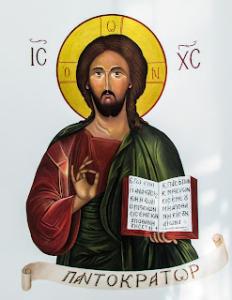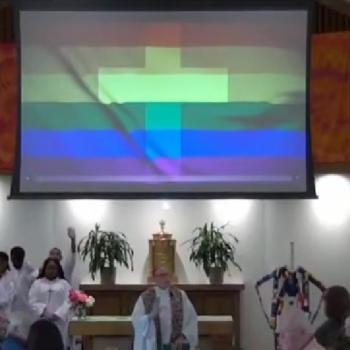How should a Christian view Jesus the Teacher?  Dr. Steven Nemes posted a video to his channel on why one should remain Protestant. He refers to, and relies heavily upon, a particular reading of Matthew 23, in which he claims Jesus teaches against the “traditionalism” of the Scribes and Pharisees, and how this stands as a warning to all Christians.
Dr. Steven Nemes posted a video to his channel on why one should remain Protestant. He refers to, and relies heavily upon, a particular reading of Matthew 23, in which he claims Jesus teaches against the “traditionalism” of the Scribes and Pharisees, and how this stands as a warning to all Christians.
Jesus the Teacher
According to Dr. Nemes, Christ says he alone is the Teacher and all Christians are only students and disciples. Early Church Fathers are only good as tutors. Protestants only have one Teacher, which is Christ related in the Scripture. Roman Catholics (here on as RC) and Eastern Orthodox (here on as EO) set up other teachers beside Christ as unquestionable authorities and therefore break Christ’s teaching. In other words, in direct violation of Matthew 23:8-10, the RC and EO place individuals alongside the Teacher and make them irrefutable, thereby enshrining extra-biblical traditions.
Dr. Nemes then provides examples of how the RC and EO violate this teaching by calling their priest “father” and the Doctors of the Church as “teachers.” He also claims to not have a problem with this but finds it an interesting parallel. Next, he turns to the RC and EO use of icons or “graven images” as a violation of Exodus 20:4-6 and an obvious example of “tradition” contradicting Christ the Teacher.
In short, Dr. Nemes misunderstands Matthew 23 and Exodus 20. The foundation of his argument rest upon this misunderstanding. All scriptural quotations are from the English Standard Version.
Jesus the Teacher in Context
Let us turn to Matthew 23:8-10 in the full context of Matthew 23:1-15.
Then Jesus said to the crowds and to his disciples, 2 “The scribes and the Pharisees sit on Moses’ seat, 3 so do and observe whatever they tell you, but not the works they do. For they preach, but do not practice. 4 They tie up heavy burdens, hard to bear, and lay them on people’s shoulders, but they themselves are not willing to move them with their finger. 5 They do all their deeds to be seen by others. For they make their phylacteries broad and their fringes long, 6 and they love the place of honor at feasts and the best seats in the synagogues 7 and greetings in the marketplaces and being called rabbi by others.
8 But you are not to be called rabbi, for you have one teacher, and you are all brothers. 9 And call no man your father on earth, for you have one Father, who is in heaven. 10 Neither be called instructors, for you have one instructor, the Christ. 11 The greatest among you shall be your servant. 12 Whoever exalts himself will be humbled, and whoever humbles himself will be exalted. 13 “But woe to you, scribes and Pharisees, hypocrites! For you shut the kingdom of heaven in people’s faces. For you neither enter yourselves nor allow those who would enter to go in. 15 Woe to you, scribes and Pharisees, hypocrites! For you travel across sea and land to make a single proselyte, and when he becomes a proselyte, you make him twice as much a child of hell as yourselves. [emphasis mine]
Pharisees at Teachers
Dr. Nemes claims that the Scribes and Pharisees claimed to have a successional line and were seen by others as occupying the “seat of Moses” (Matthew 23:1). Actually, it is Jesus Himself who makes the claim that the Scribes and Pharisees “sit on Moses’ seat.” Not only do they sit on Moses’s seat, but Jesus also further admonishes His listeners to “do and observe whatever they tell you…” Therefore, it is NOT the teaching authority to which Jesus chastises the Scribes and Pharisees, but their hypocrisy.
The Hypocritical Teacher
It is at their hypocrisy Jesus levels his attack. They preach, but do not practice (v. 3). They tie heavy burdens to people’s shoulders, but do not help (v. 4). They do their deeds to be seen by others (v. 5). They love to be honored and called rabbi (v. 6 and 7). It is in this context of hypocrisy that Jesus then uses hyperbole when he says to call no one rabbi, father, and instructor/teacher (vs. 8-10). He reiterates His point in verse 11 by stating that the greatest among them will be servants, and in verses 13 to 15, where He uses the word “hypocrites!”
Call No Man Father. But…
This reading is also verified by St. Paul in his references to himself as both a “father” and “teacher.”
1 Cor. 4:14–15
14 I do not write these things to make you ashamed, but to admonish you as my beloved children. 15 For though you have countless guides in Christ, you do not have many fathers. For I became your father in Christ Jesus through the gospel. [emphasis mine]
St. Paul also refers to others as sons in 1 Tim 1:18, 2 Tim. 2:1, Phil. 2:22, and Titus 1:4. Clearly, St. Paul had no issue with being called “father.” This would not be the case if he were taking Christ’s words the way Dr. Nemes does.
Call No Man Teacher. But…
As an instructor/teacher St. Paul states in 1 Timothy 2:15:
7 For this I was appointed a preacher and an apostle (I am telling the truth, I am not lying), a teacher of the Gentiles in faith and truth. [emphasis mine]
And 2 Tim. 1:11
11 for which I was appointed a preacher and apostle and teacher, (emphasis mine]
Let us also not overlook Jesus’ own commission to “teach.”
Matthew 28:19–20
19 Go therefore and make disciples of all nations, baptizing them in the name of the Father and of the Son and of the Holy Spirit, 20 teaching them to observe all that I have commanded you. And behold, I am with you always, to the end of the age.” [emphasis mine]
When taken in context, Dr. Nemes’ interpretation of Matthew 23:8-10 does not hold up and, when compared to St. Paul’s own fatherly references and Jesus’ own commission to teach, it falls flat.
Graven Images
What of Dr. Names’ critique that both RC and EO violate God’s law in Exodus 20:4-6? Let us look at this passage and others in context.
Exodus 20:4-6
4 “You shall not make for yourself a carved image, or any likeness of anything that is in heaven above, or that is in the earth beneath, or that is in the water under the earth. 5 You shall not bow down to them or serve them, for I the Lord your God am a jealous God, visiting the iniquity of the fathers on the children to the third and the fourth generation of those who hate me, 6 but showing steadfast love to thousands of those who love me and keep my commandments. [emphasis mine]
This would appear to be closed case for all carved images of any likeness, whether in the earth or in heaven above. Or is it?… What about Exodus 25:18?
God Commands Graven Images? Oh, my…
Exodus 25:18
18 And you shall make two cherubim of gold; of hammered work shall you make them, on the two ends of the mercy seat. [emphasis mine]
In this passage, we see God command to Aaron to make two cherubim (angels) and place them at either end of the mercy seat of the Ark of the Covenant. Why would God command Aaron to break His own commandment just given five chapters before? And what about Numbers 21:6-9?
Numbers 21:6-9
6 Then the Lord sent fiery serpents among the people, and they bit the people, so that many people of Israel died. 7 And the people came to Moses and said, “We have sinned, for we have spoken against the Lord and against you. Pray to the Lord, that he take away the serpents from us.” So Moses prayed for the people. 8 And the Lord said to Moses, “Make a fiery serpent and set it on a pole, and everyone who is bitten, when he sees it, shall live.” 9 So Moses made a bronze serpent and set it on a pole. And if a serpent bit anyone, he would look at the bronze serpent and live. [emphasis mine]
Again, we see that God commanded the creation of graven/carved images to heal the affliction He sent to His people. Why would God violate His own commandment? Such instances are not violations of the commandment of God. The issue here is the worship of said graven/carved images as God Himself.
The Image of God and the Incarnate Christ
What of God taking on an image Himself in the incarnate Christ? We find the answer foreshadowed in Deuteronomy 4:15-16 and explicitly stated in Colossians 1:15.
Deuteronomy 4:15-16
15 “Therefore watch yourselves very carefully. Since you saw no form on the day that the Lord spoke to you at Horeb out of the midst of the fire, 16 beware lest you act corruptly by making a carved image for yourselves, in the form of any figure, the likeness of male or female, [emphasis mine]
Colossians 1:15
He is the image of the invisible God, the firstborn of all creation. [emphasis mine]
The Incarnate Word
It is through the lens of the Incarnation of the Word that RC and EO view the icons and holy images Dr. Nemes condemns as idolatry. His critique is not new. The RC and EO Church settled the issue at the Second Council of Nicaea in 787 AD. St. John of Damascus offered the best defense against the Iconoclast in his work, Apologia of St John of Damascus Against Those who Decry Holy Images.
I believe in one supersubstantial being, one divine Godhead in three entities, the Father, the Son, and the Holy Ghost, and I adore Him alone with the worship of latreia. I do not adore creation more than the Creator, but I adore the creature created as I am, adopting creation freely and spontaneously that He might elevate our nature and make us partakers of His divine nature. Together with my Lord and King I worship Him clothed in the flesh, not as if it were a garment or He constituted a fourth person of the Trinity—God forbid. That flesh is divine and endures after its assumption.
Human nature was not lost in the Godhead, but just as the Word made flesh remained the Word, so flesh became the Word remaining flesh, becoming, rather, one with the Word through union (καθ υποστασιν). Therefore, I venture to draw an image of the invisible God, not as invisible, but as having become visible for our sakes through flesh and blood. I do not draw an image of the immortal Godhead. I paint the visible flesh of God, for it is impossible to represent a spirit (ψυχη), how much more God who gives breath to the spirit. [emphasis mine]
The RC and EO do not pray to or worship the icon or holy image as one worships God (latreia). The RC and EO use these images to contemplate and inspire toward the memory of the prototype they represent, not to give worship reserved for God alone.
Jesus the Teacher and His Church
As shown above, Dr. Steve Nemes claims regarding the RC and EO Churches are based on an improper interpretation of Matthew 23:8-10. His claim that Jesus condemned the Scribes and Pharisees’ “traditionalism” and therefore this condemnation serves as a warning to any who come after is incorrect. Jesus’ condemnation of the Scribes and Pharisees was due to their hypocrisy, not their authority, an authority He affirms in Matthew 23:1. An authority Christ gave his Church. (Matthew 16: 13-20)
Likewise, I demonstrated Dr. Nemes’ view on icons and holy images as a violation of Exodus 20:4-6 does not follow, given the further context of Exodus 25:18, Numbers 21:6-9, Deuteronomy 4:15-16, and most importantly Colossians 1:15. It is through the lens of the Incarnation that Dr. Nemes must address his critique of icons and holy images. Furthermore, too strong a case for Exodus 20:4-6 could put his theology on the Incarnation in jeopardy. Dr. Nemes would do well to follow Christ the Teacher and embrace His Church.
Like what you read? Please check out my other writing here.
Please like and follow me on Facebook.












